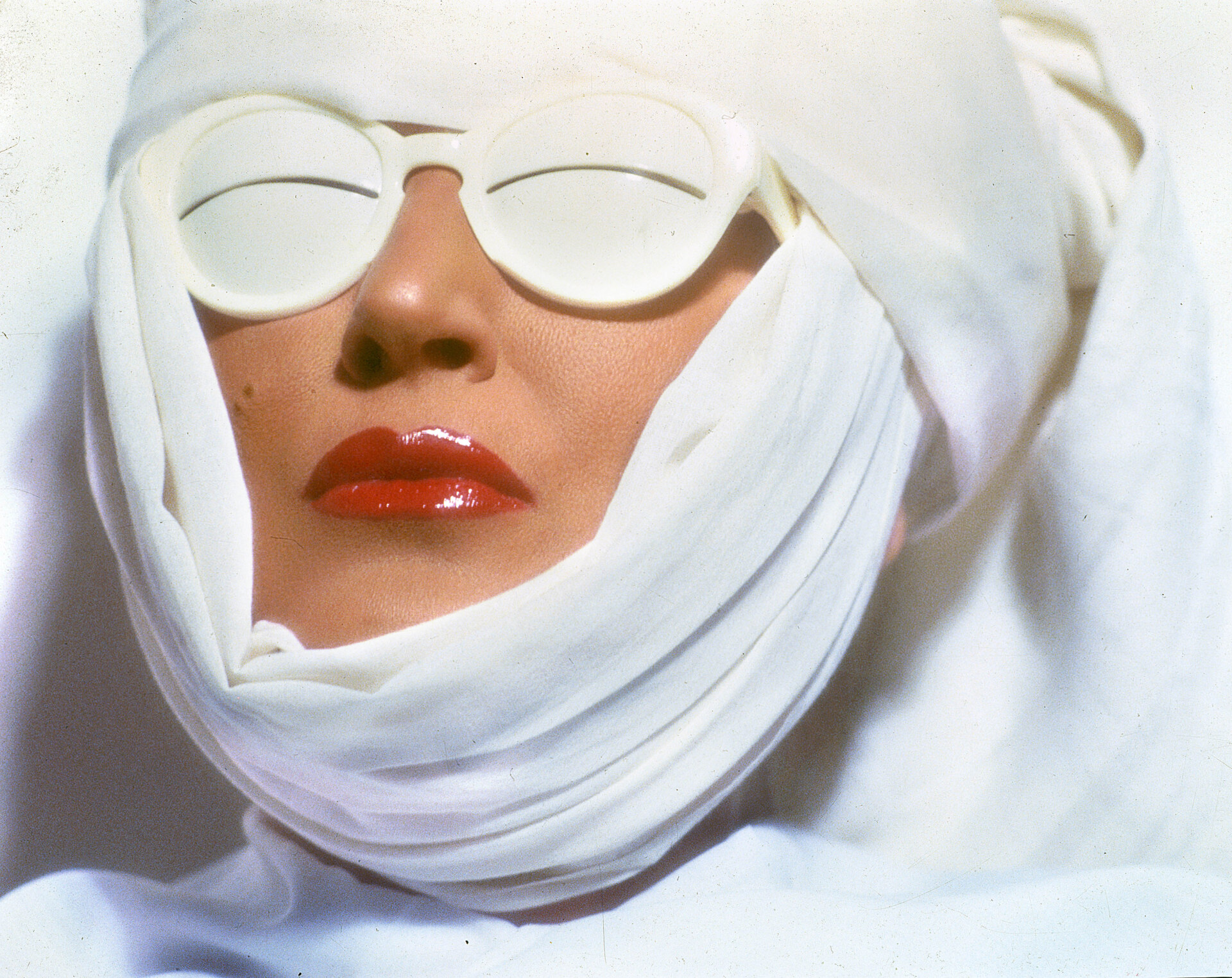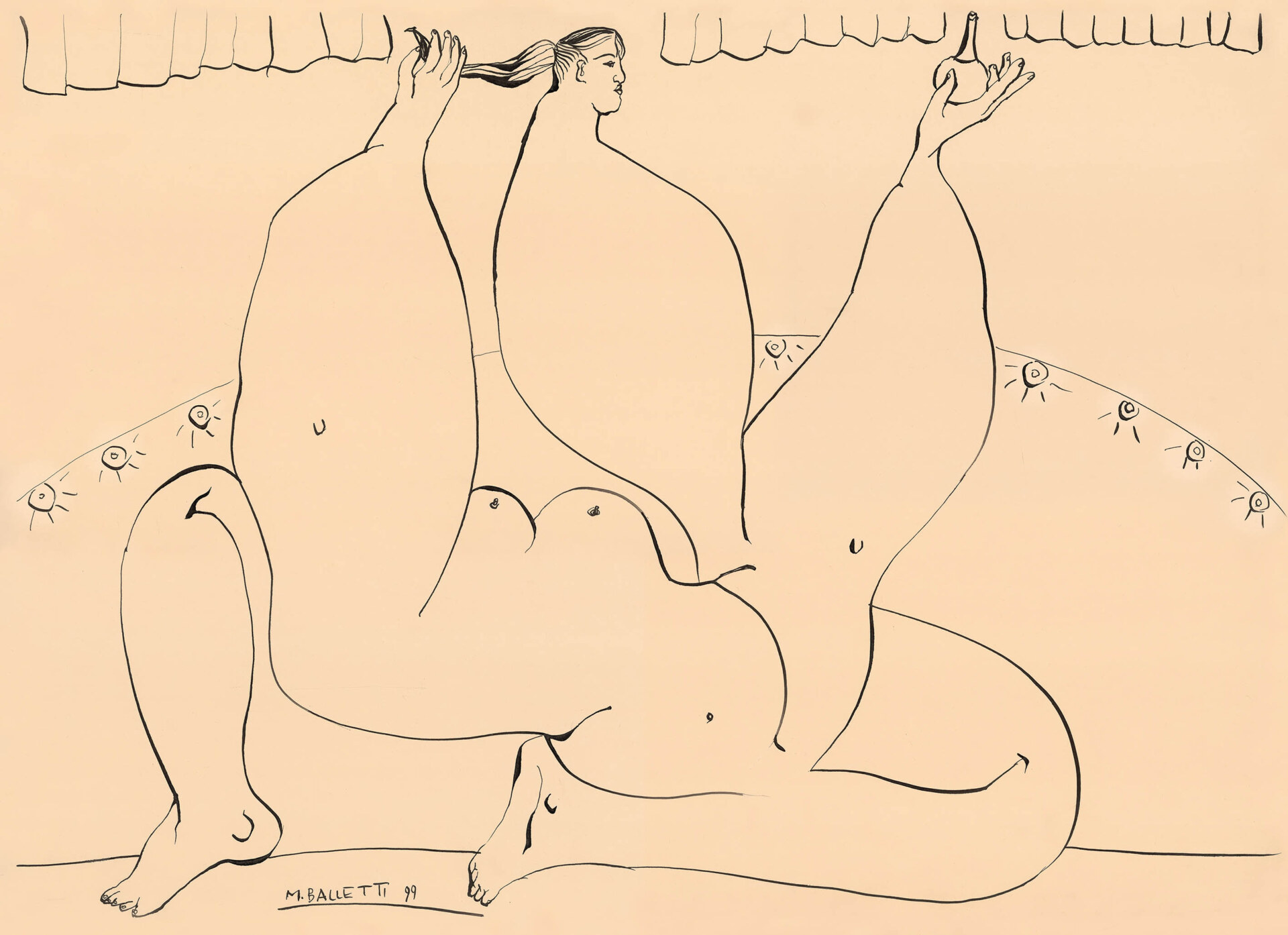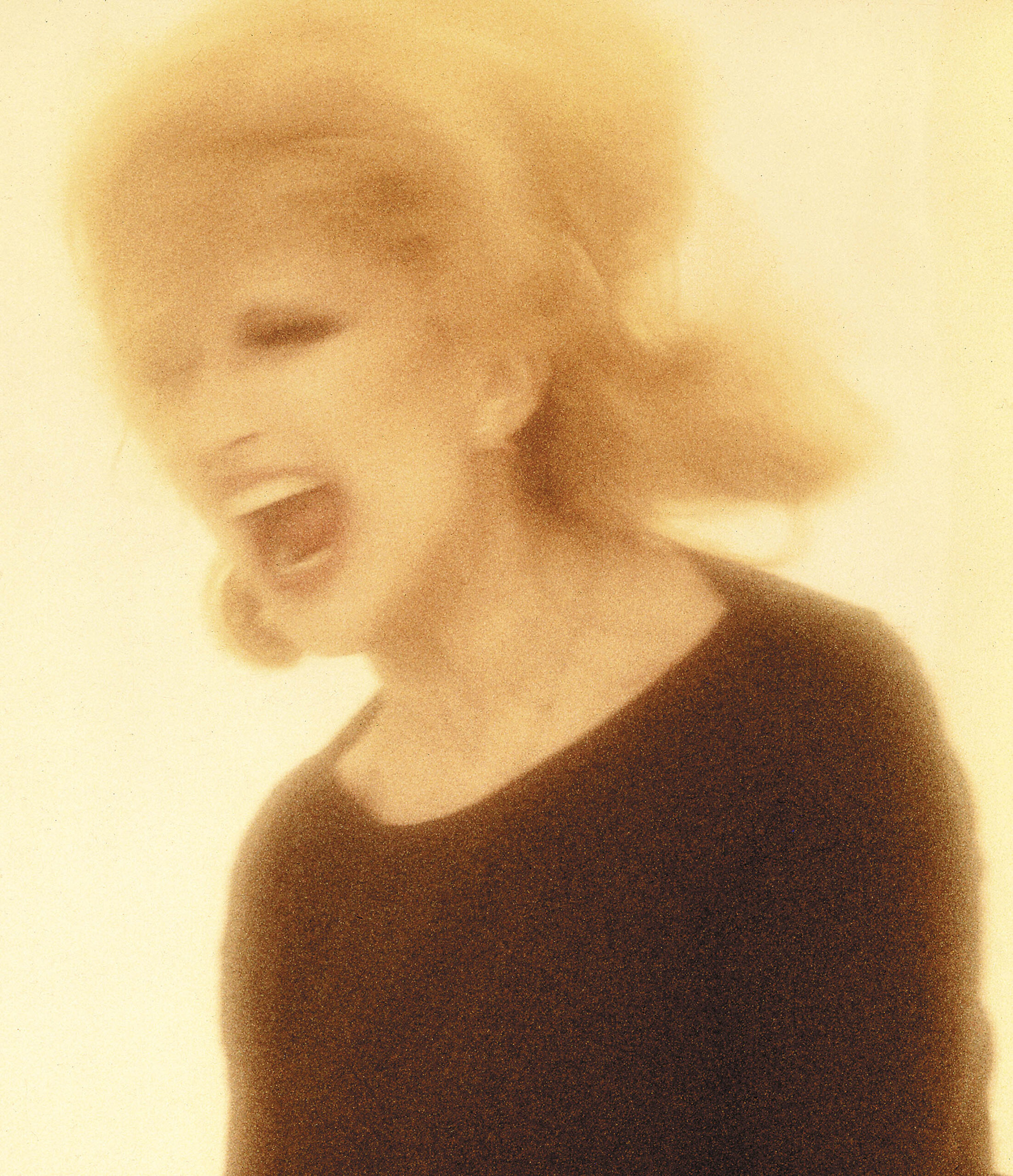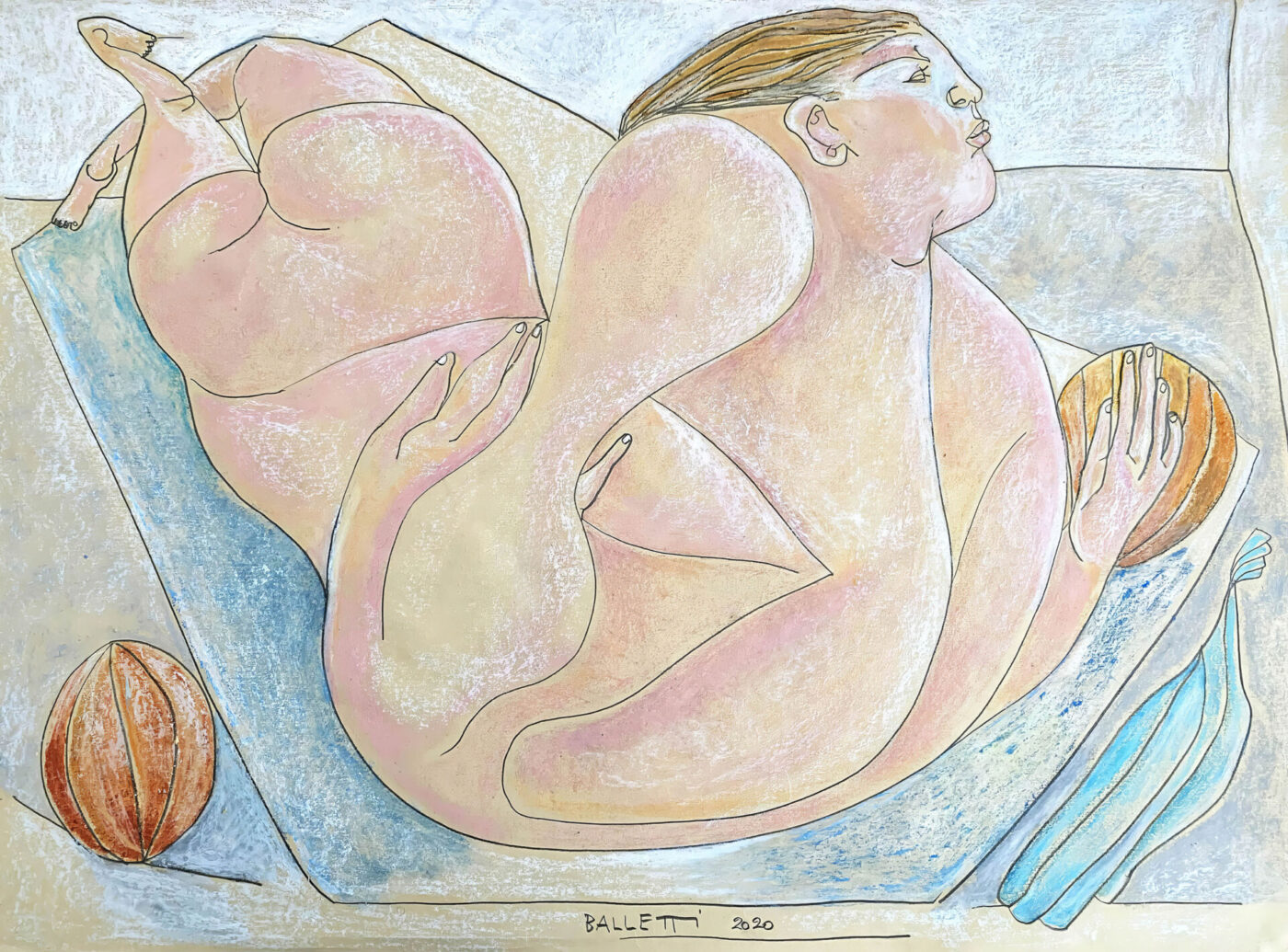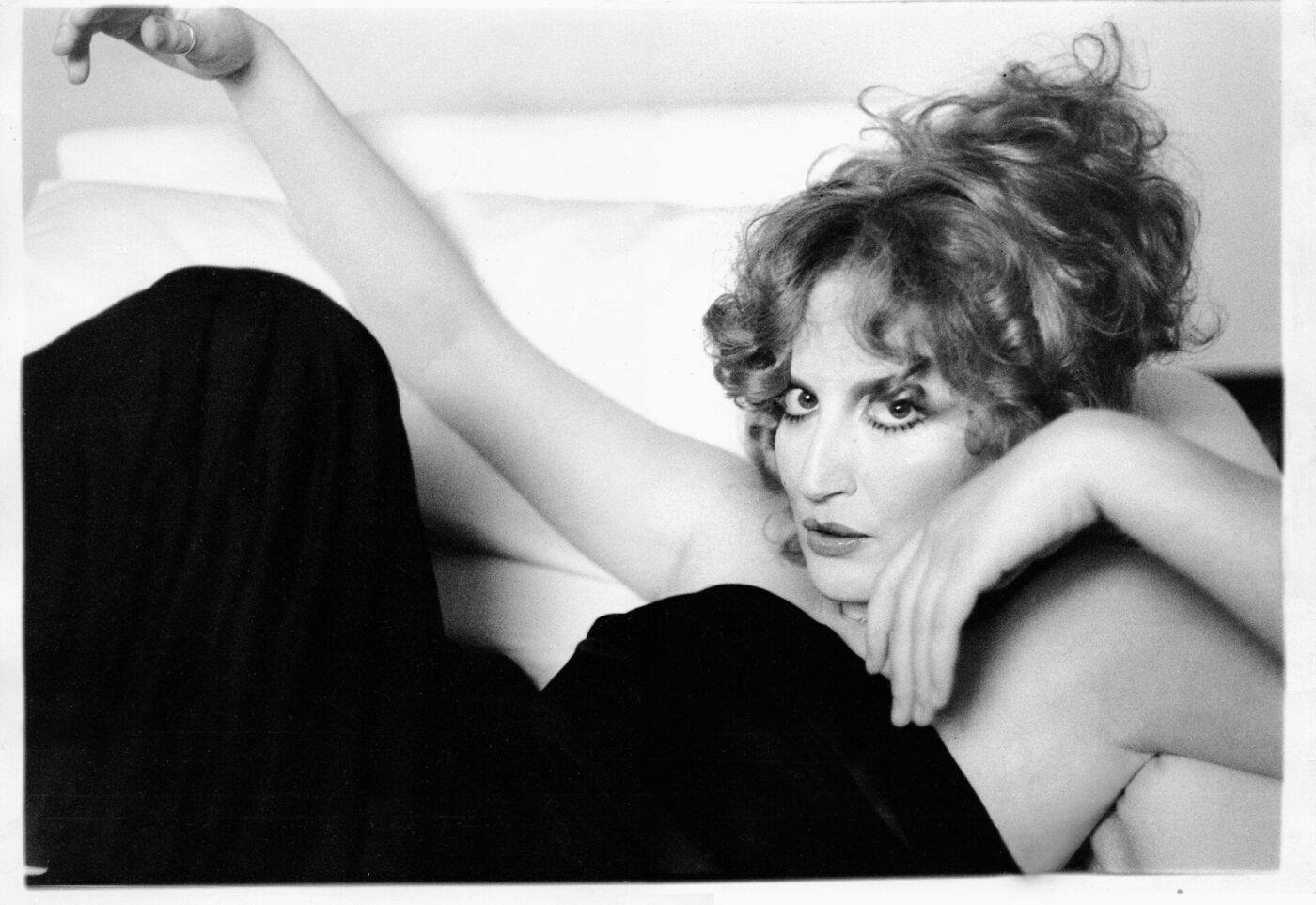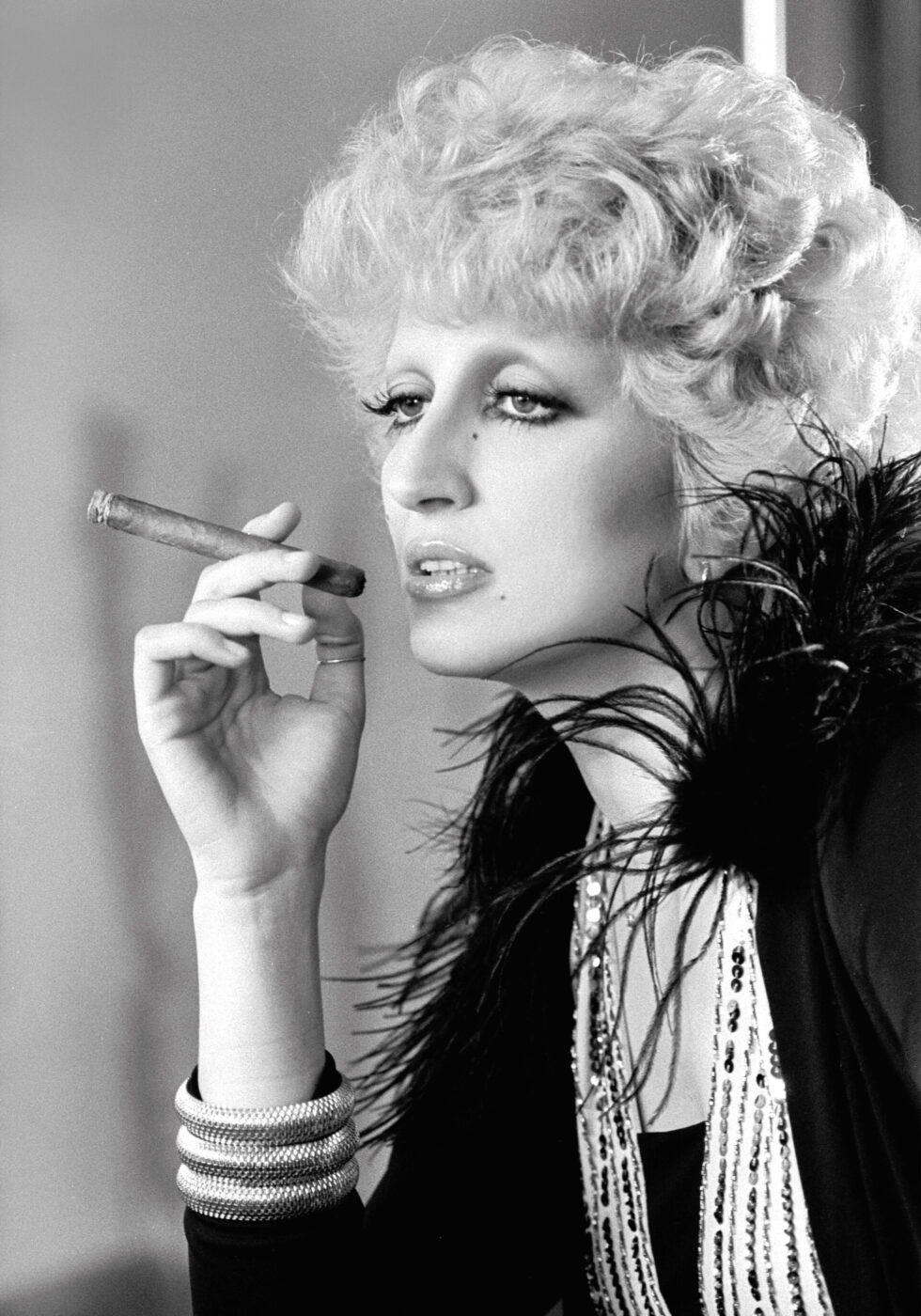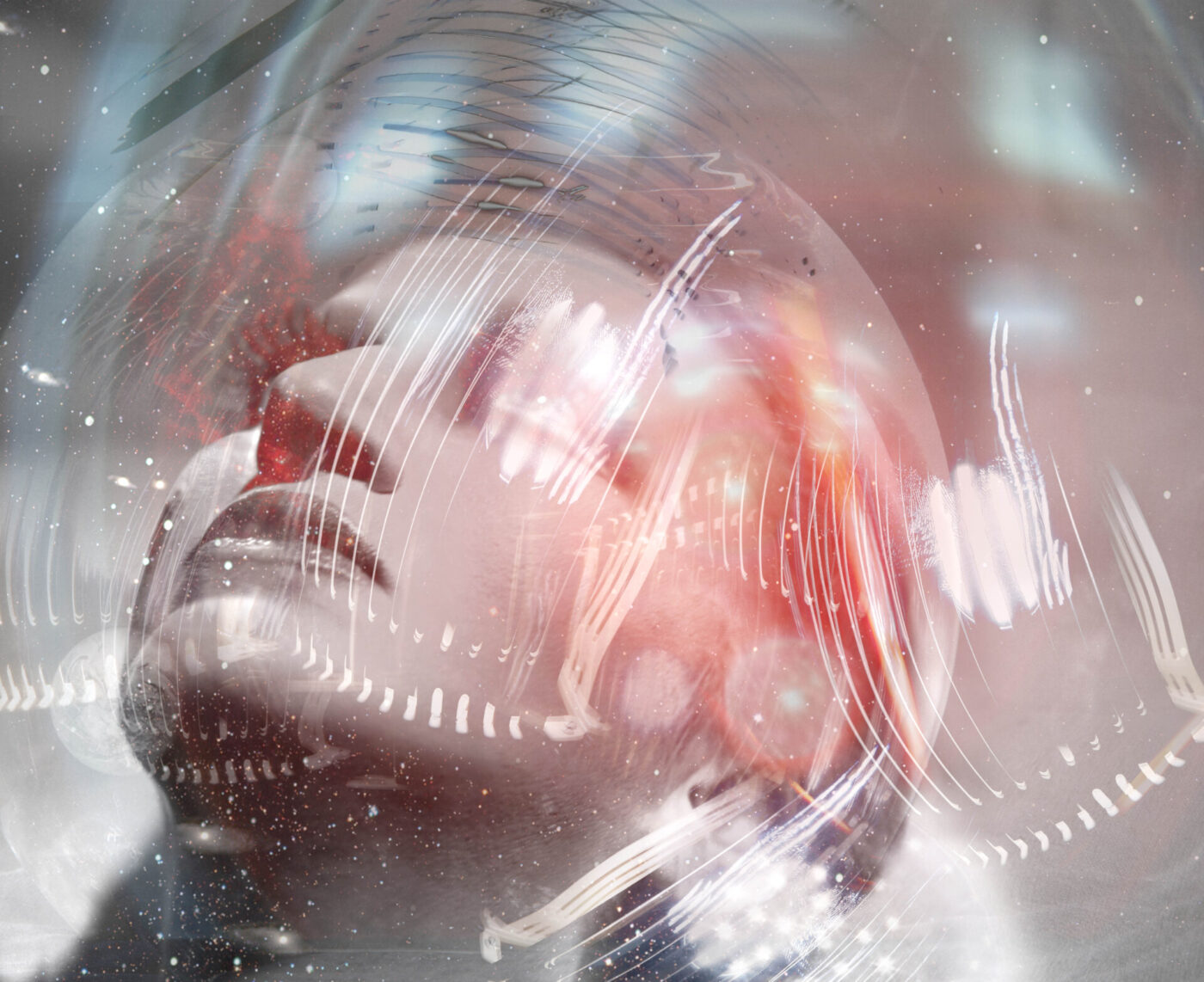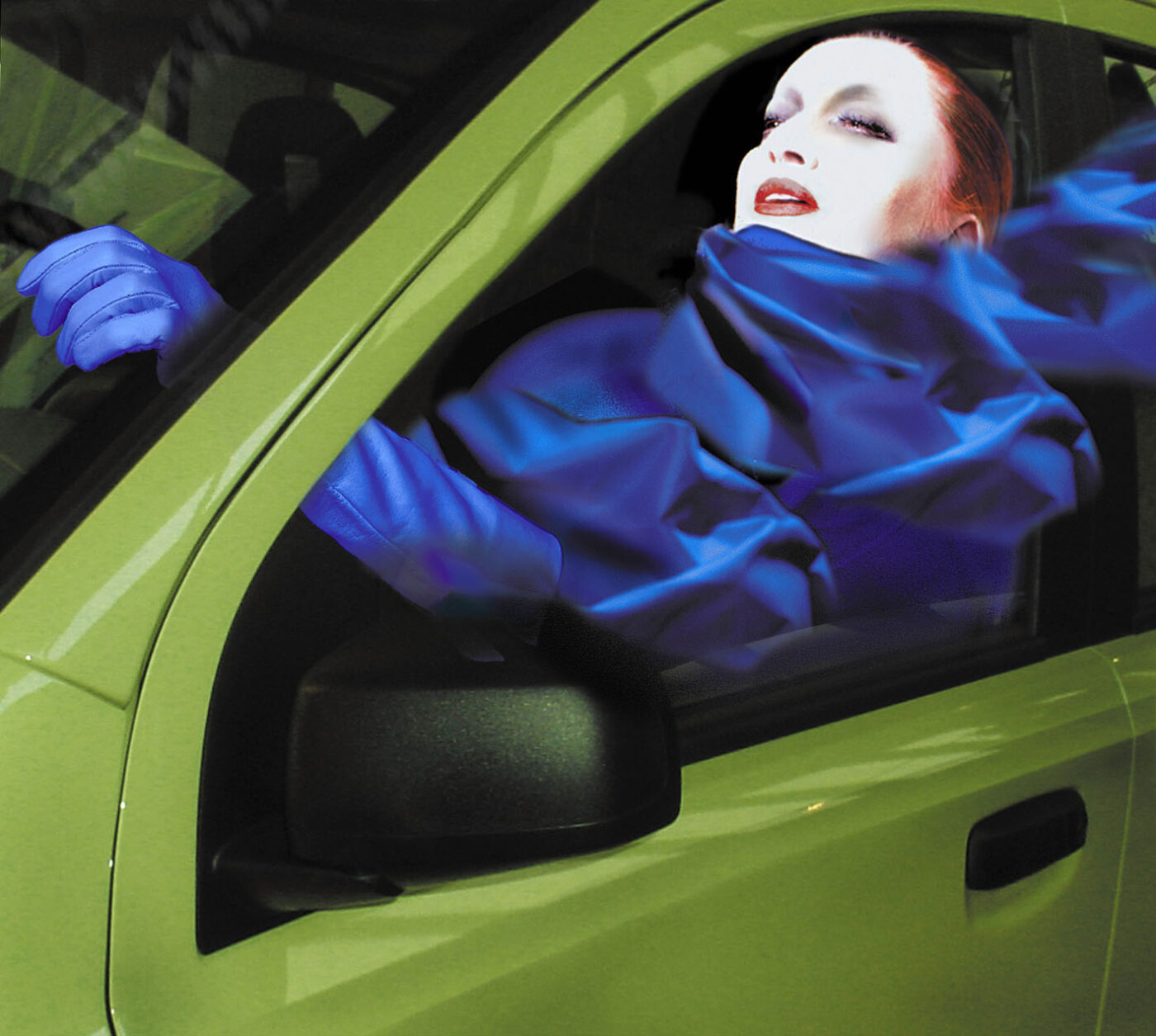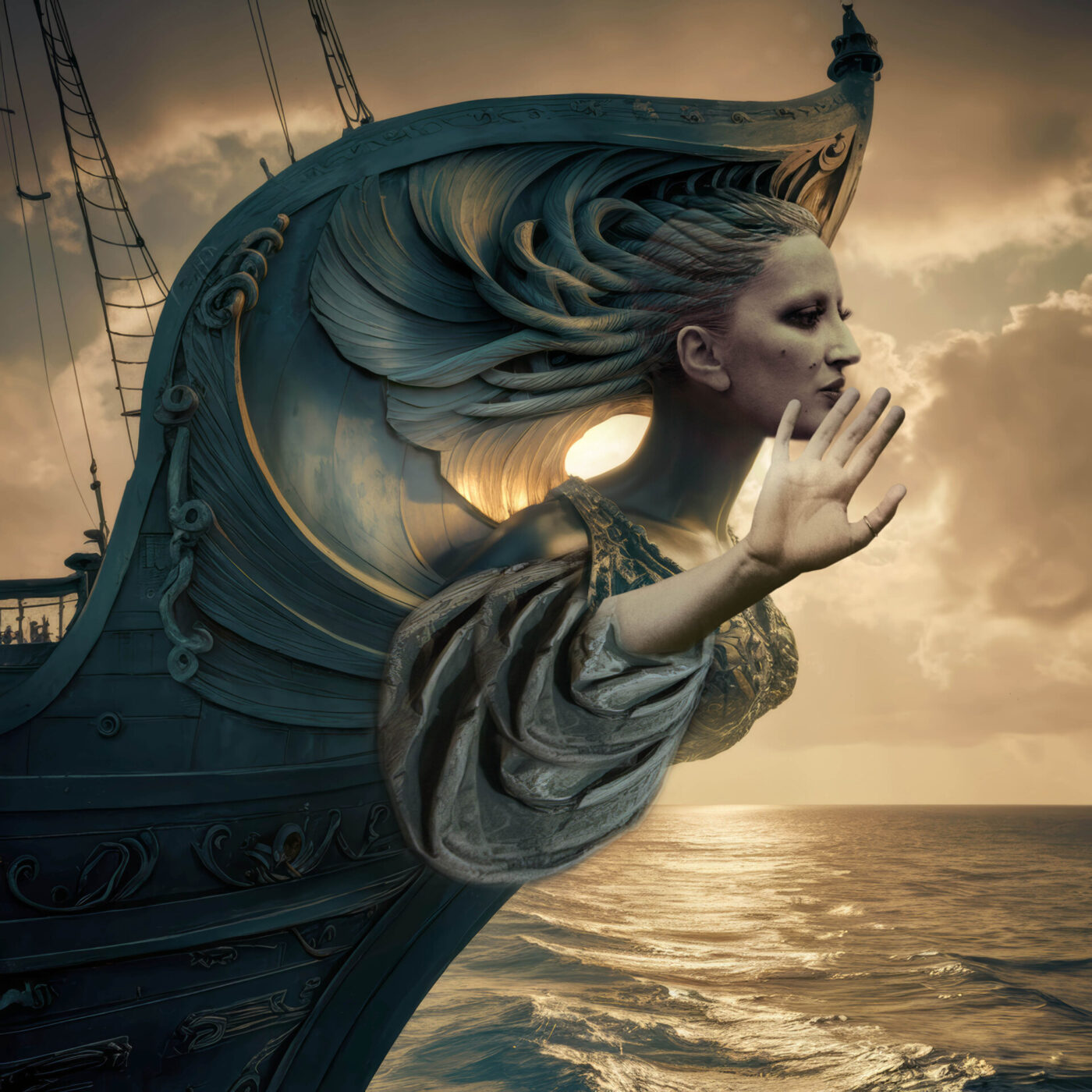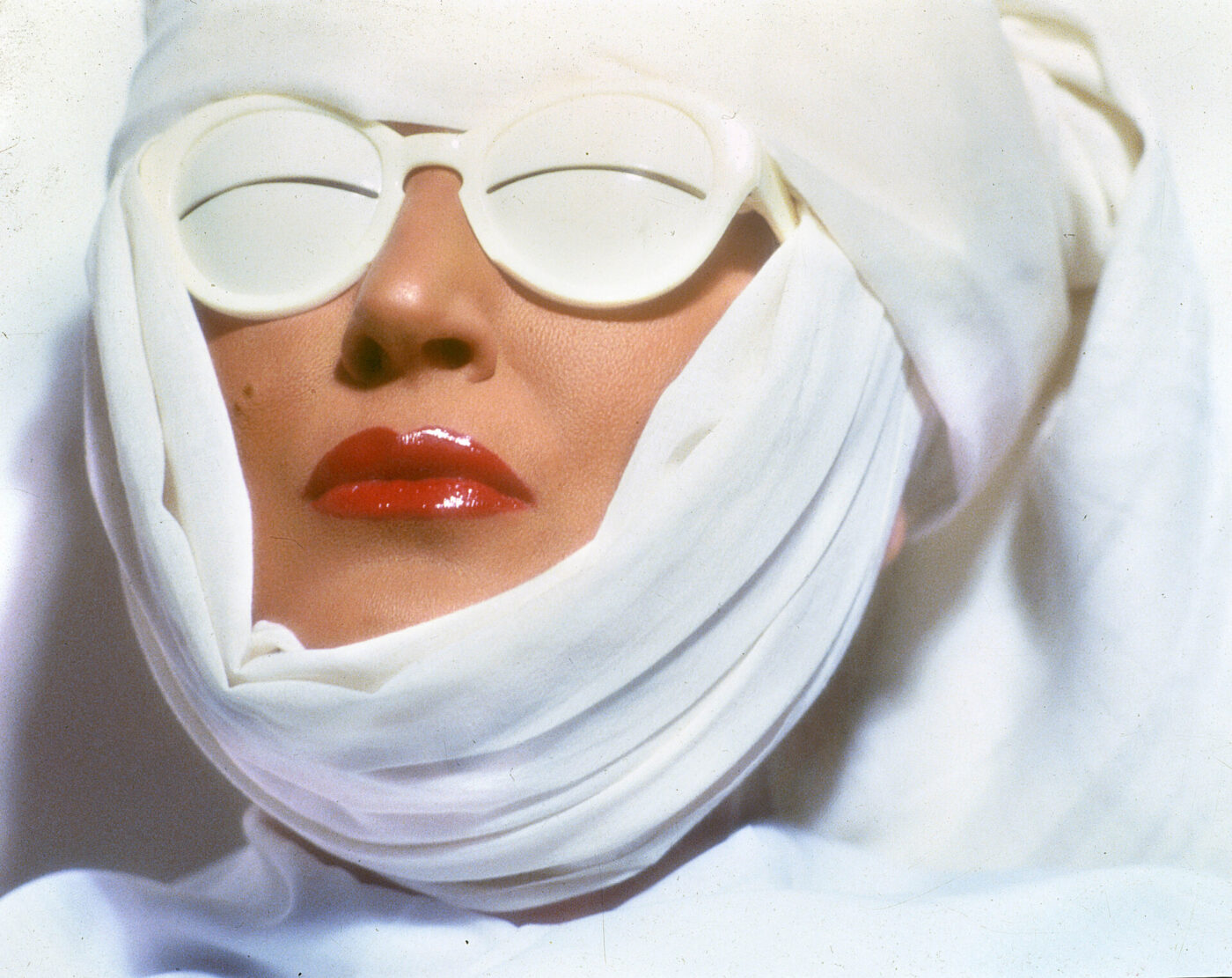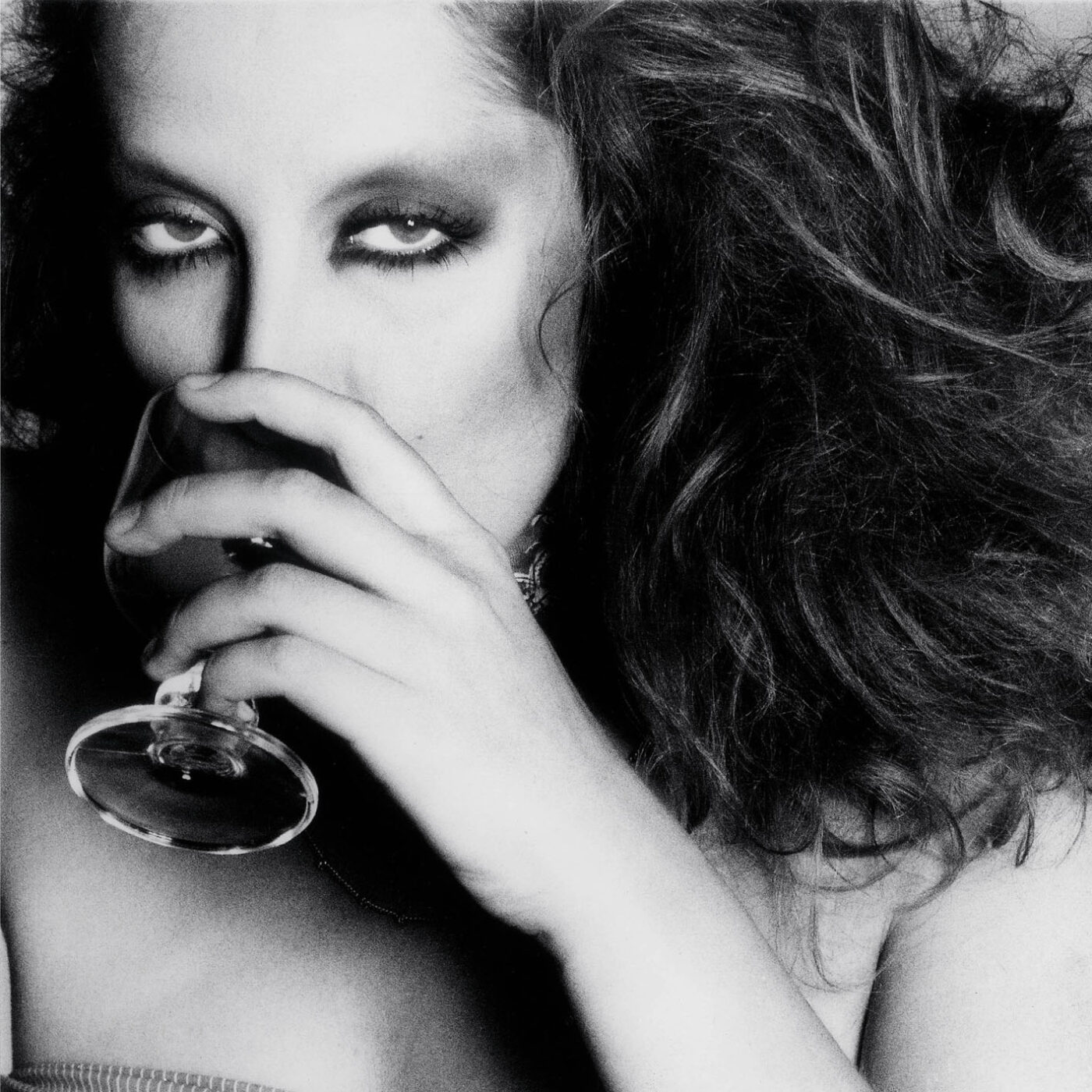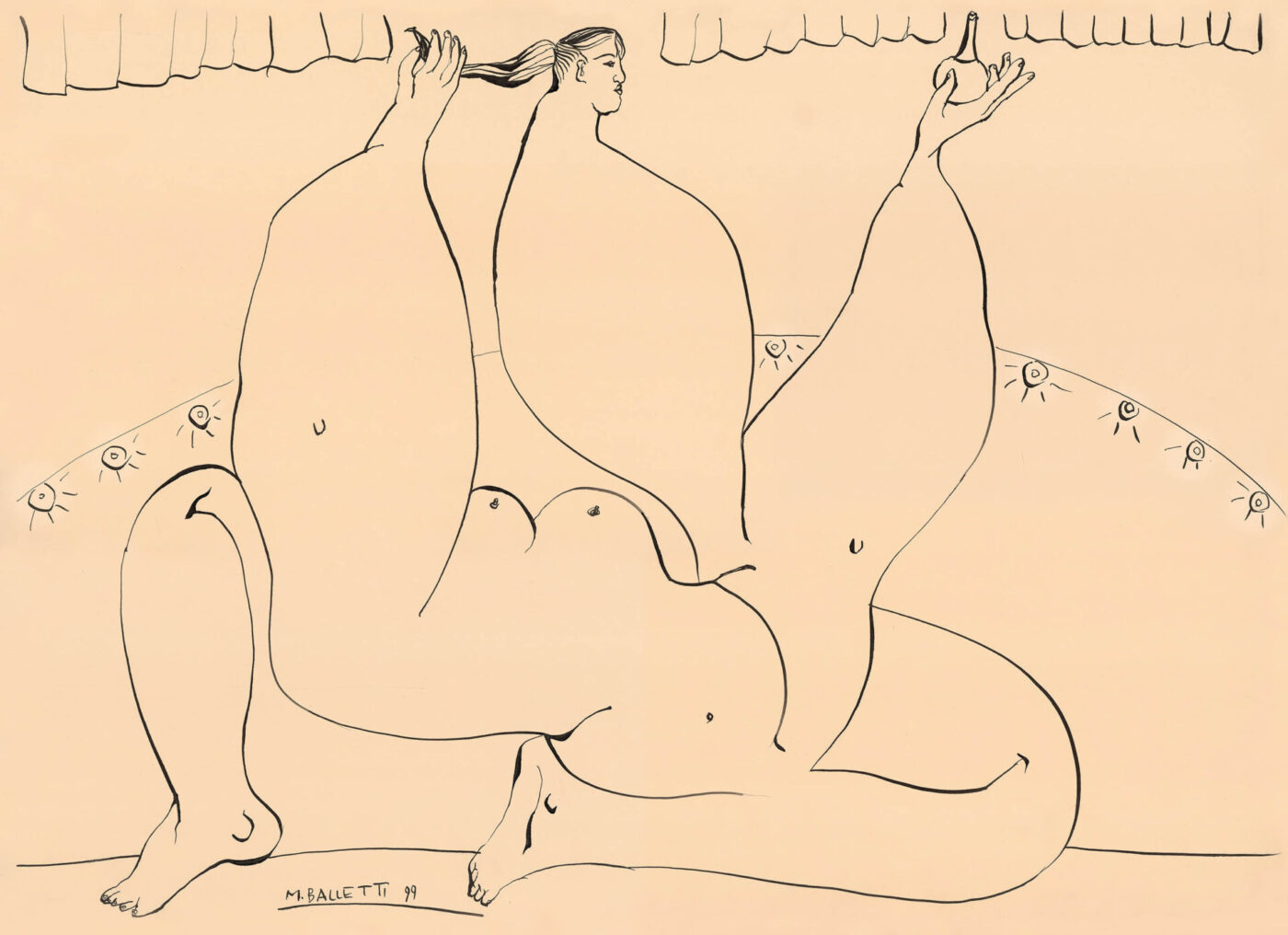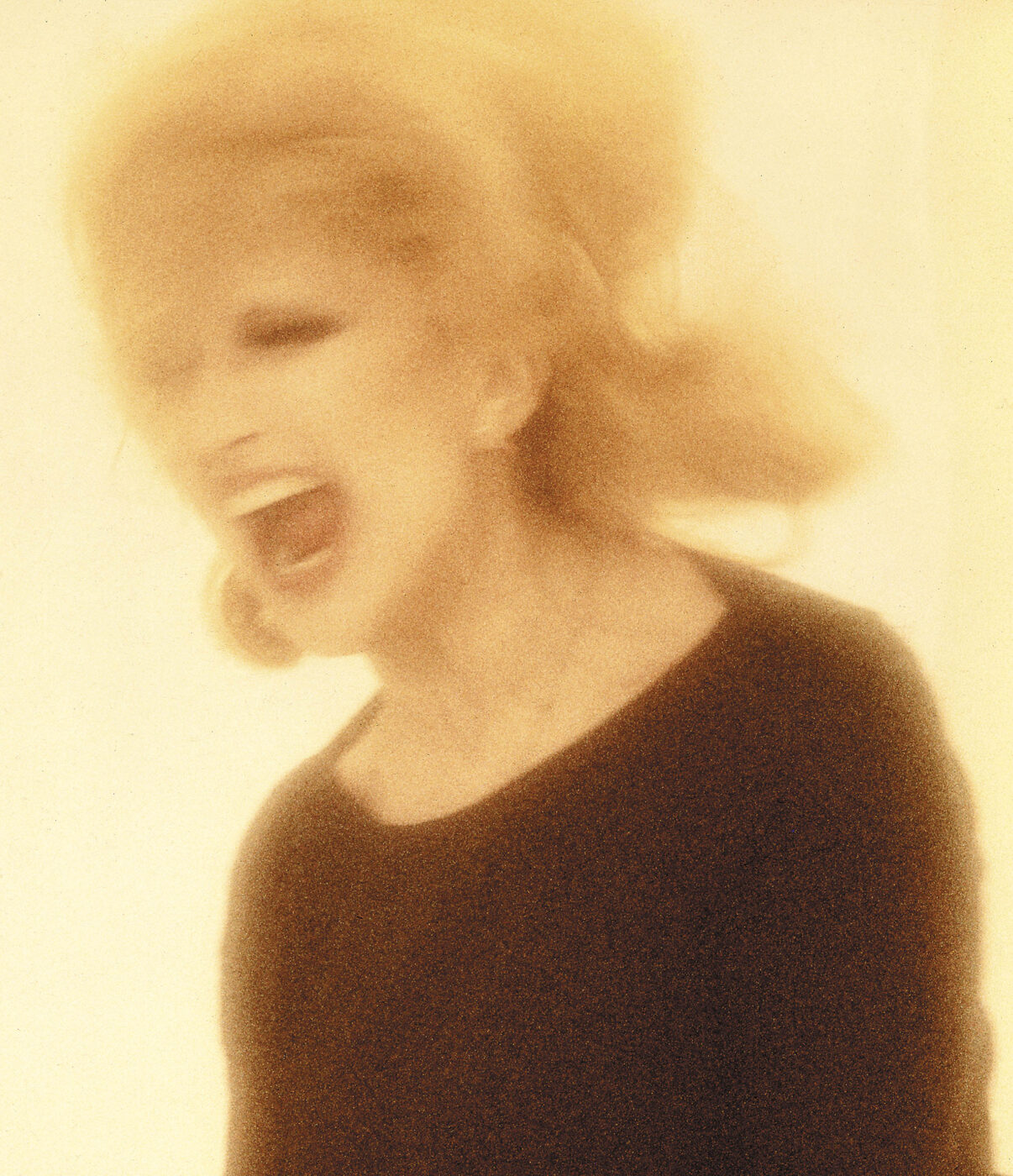Mina, Italy’s ultimate music icon, and Mauro Balletti, the visionary artist and photographer entrusted with shaping her public image for over five decades, met serendipitously in the backstage of one of her concerts in 1972. Since that first encounter, their collaboration grew into a profound, disruptive symposium; a 50-year journey through music, art, fashion, and the cultural evolution of a nation. With every photograph, Balletti has sculpted and reimagined the myth surrounding Mina, becoming the sole interpreter of her extensive career and enigmatic presence.
Balletti himself is a multifaceted individual. Quietly insightful and witty, he shifts seamlessly between drawing, painting, photography, and video, infusing his every creation with an intimately experimental spirit. His work, often described as “magical neorealism,” defies labels, bearing a distinctive fingerprint—a style as unique as the muse who has inspired so much of it. “A standout,” as Massimiliano Pani, Mina’s son, aptly called him.

Rugbista (2020); Drawing by Mauro Balletti
We speak on the phone one November day, separated by cities but connected by a shared weather forecast. In Venice like in Milan, where Balletti lives and works, there’s the predictable blanket of fog. I can almost picture his studio—an alchemical space brimming with books, drawings, and light, where solitude fosters prolific creativity. “I’m a solitary creature,” he tells me, a private man who has granted only a handful of interviews. “I’ve always worked in quiet isolation.” He talks with refreshing frankness, tracing the story of two artistic lives—his and Mina’s—intertwined by an uncanny ability to see beyond the present. Reserved yet profoundly daring, their partnership remains an emblem of creative foresight.
I ask him to recount their first encounter: a young Mauro Balletti, barely in his twenties and a devoted Mina fan, is invited through a shared contact to step into the backstage of a concert and unknowingly into his destiny. “It was at the Bussola in Viareggio,” he recalls, describing the night Mina was rehearsing with her orchestrator, Gianni Ferrio, ahead of a series of shows. “I met her that evening, and a friendship sparked instantly.” At the time, Balletti was a Modern Literature student at the University of Milan with a passion for drawing but no experience in photography. Yet, just months later, Mina would unexpectedly ask him to photograph her for a Tassoni commercial in Salò.
“I said yes, even though I had never taken a photograph in my life,” he admits with a laugh. Armed with a borrowed Nikon F2 and a crash course from a photographer friend, Balletti stepped behind the lens for the first time—with Mina as his subject. The results? Those very first shots became the iconic covers of her albums Frutta e verdura and Amanti di valore. In a matter of months, Balletti transformed into a photographer. “Mina has always had this extraordinary ability to see the future,” he reflects. “She saw it in me, too.”

Mina in 1978; Photo by Mauro Balletti
Art runs deep in Mauro Balletti’s family. With both his father and grandfather as painters, he grew up in an environment where art wasn’t a separate pursuit but a natural part of daily life. This early immersion fostered a passion for graphic expression and shaped his creative identity in a setting brimming with visual stimuli. “As a child, my father would take me to art-house cinemas,” Balletti recalls, “to watch films that were far from typical for a young boy—directors like Carl Theodor Dreyer, Ingmar Bergman, Sergei Eisenstein, Pier Paolo Pasolini, and Federico Fellini. He understood that I connected more with images than words. In a way, I’ve always had a dialogue with images, finding it easier to express myself visually than verbally.” These experiences left a mark on Balletti, creating a personal hierarchy where visuals came first. They also laid the foundation for his later appreciation of great photographers. “As a beginner, I approached photography with immense curiosity,” he says.
Reflecting on the proof sheets of his first-ever Mina photos—those now-iconic 1973 shots with her holding a cigar, glancing languidly off-camera, sporting a blond, short haircut that would become the precursor to her Milleluci look with Raffaella Carrà—Balletti marvels at their precision. “At twenty, I wasn’t well-versed in the international photography scene, but looking back, I’m struck by how technically sound those early images were. I already had a sense of framing and an understanding of photography’s mechanics.” That innate vision, he believes, stemmed from his background in drawing and art. “My early influences—Picasso, Morandi, El Greco, Schiele, and many others—helped shape my sense of composition and provided endless inspiration,” he adds. “It’s not that I had everything figured out back then, but I knew the quality of work I should be aspiring to.”

Mina in 1973, hinting at her future Milleluci style; Photo by Mauro Balletti ©PDU
And then there’s Mina—a figure who has seamlessly embodied countless artistic references, blending versatility with theatricality. I’m curious to know why he chose to devote most of his career to her, so I ask him: “Why Mina?”
“She is pure art,” he declares. “Magnetic. I still remember the early Barilla commercials created by Piero Gherardi, Fellini’s costume designer. Those weren’t just ads—they were music videos, way ahead of their time. Gherardi brought all of Fellini’s creativity and atmosphere to Mina, creating something extraordinary. Those commercials captivated me. And then, there was her voice—the way she sang. I sensed her extraordinariness even before meeting her. When I finally did, she was exactly as I had imagined. Mina is probably the smartest person I’ve ever met—a visionary, a true futurist. Artistically, she’s incredible. Think about it: 67 years of career, and still number one.”
Balletti describes their visual collaboration as “serious fun,” with Mina acting as both icon and iconoclast. “She’s a pop kaleidoscope,” he explains, “a rare artist, the kind you can’t compare to anyone else. Musically, she moves effortlessly between genres—from rock to classical. Who else could sing ‘Sweet Transvestite’ from The Rocky Horror Picture Show and then turn around and perform a Puccini aria? That range is unheard of in music history. And visually, her face is a canvas for endless interpretations. She can be Leonardo da Vinci, Picasso, or Andy Warhol all in one. Twenty years later, the great divas—Madonna, Lady Gaga—have all followed the path Mina paved, playing with their image just as she did. But for Mina, it was never an act of reinvention. She approached transformation playfully—shaping her physicality with instinct and imagination.”
It wasn’t just a game, though. There was always a commercial awareness behind it, as she turned that playful energy into a product with deeper artistic meaning. In doing so, she reached an unparalleled artistic maturity, all while keeping the joy alive. “That’s what I mean by ‘serious fun’. It’s a rare gift.”
When I ask what has remained constant in their decades-long collaboration, beyond friendship, Balletti’s answer is swift and sure: the insatiable desire to experiment, to transform, to marvel and be marveled. “We mastered the art of using wonder as a communication tool, as a way to infuse our work with playfulness. Wonder is the cornerstone of spectacle, of art, of theater. Without it, and without a touch of irony, you can never reach the highest peaks. For us, this process was always instinctive and organic. It wasn’t calculated; it either worked, or it didn’t. Mina couldn’t be fooled. She always knew when a photo had an impact. The real challenge was keeping her surprised, album cover after album cover. Plus, her audience had sky-high expectations; they were devoted, almost reverent. We couldn’t let them down.”
In 1978, just a few years after their first encounter and collaboration, Mina vanished from the public stage. It was a startling, radical decision, perhaps driven by a need to let her art speak on its own, unburdened by the overwhelming weight of fame. Mina disappeared, leaving behind only her voice.

The cover for Mina's 2019 single Il Segnale; Design by Mauro Balletti ©PDU
But it wasn’t just her voice that remained. Her visual narrative, crafted with Balletti as her only authorized photographer, gained even greater significance. I ask him what it was like to become the sole interpreter of her face, the visual gatekeeper through whom her elusive, almost otherworldly image was expressed. “Honestly, I didn’t think much about it at the time,” he admits. “When you’re young, you’re a bit reckless, and maybe I didn’t fully grasp the weight of that responsibility. But as the years passed, Mina and I became like siblings. That closeness made everything feel less formal, less ‘professional,’ if you will—it was just a natural evolution. Now, looking back—51 years!—I can appreciate the magnitude of that role, and I think, ‘Wow.’ I’ve learned to see and understand every nuance of her visual possibilities.”
“I never sought exclusivity,” Balletti confesses. “Over the years, we’ve tried to involve fresh voices—young minds, maybe even a little out-there. What matters most is ensuring her art stays relevant iconographically. That’s why I’m constantly searching for new talents [in photography and design]. But so far, we haven’t found anyone who truly captures the vision. On social media, there are countless interpretations of her—young people, even children, drawn to her iconic face. It’s a face that speaks, that captivates. It sparks the imaginations of so many artists. I’d love to see someone from the next generation take the reins and carry forward her image into the future.”
Examining the rich visual narrative Balletti has created with Mina, the echoes of 20th-century art are unmistakable: Mina reimagined as Cubist, abstract, Dadaist, Surrealist, Futurist. I suggest whether part of his work has been to create a deliberate distance between the physical person and the projection of her image. “Her voice anchors the process you’re describing,” he explains. “It’s instinctive, eternal. Chronologically, her voice doesn’t match her age. It’s as young and vital as that of a thirty-year-old. And that’s extraordinary. Because of this, her image hasn’t ‘aged’ in the traditional sense. It remains tied to a timeless version of the face everyone recognizes. There hasn’t been a physical evolution, but rather a continuous connection to her eternal voice. That’s part of her myth.”
I step away from his photography to discuss his first love: drawing. Looking at his works—many of them line drawings with an instinctive, casual, ironic nature, in which different human figures, oftentimes naked, are portrayed in mundane or domestic acts—I can see that here too, Mina is present. She appears in different forms, but she’s always there.
“At first, I thought drawing was just a distraction from more significant painting,” he admits. “But over time, I realized that the clean, decisive stroke is deeply personal to me. It brings me immense joy. I love working with pen and ink—it’s unforgiving, a challenge where you can’t make mistakes. Often, when I start, I have no idea where the lines will lead me. I simply follow my hand, as if it’s guiding me. But Mina? She’s always a clear image in my mind—a guide, an archetype rooted in my subconscious. I’m also naturally drawn to faces like hers, faces that stay with you. Hers isn’t a perfect face, with that slightly irregular nose and eyes that seem to look downward… but it’s unforgettable. To me, she embodies dreamlike beauty, the pinnacle of it.”
“Maybe I suffer from a kind of ‘MINIA,’” he jokes.
He speaks warmly of his long-time collaborator Gianni Ronco, another artist who has shaped Mina’s visual mythology. “Gianni began working with Mina before I did, creating hundreds of illustrations, most recently for her Vanity Fair column. We worked together on many covers; he helped me airbrush some of my photos and collages, like in the case of Rane Supreme and Ridi Pagliaccio. We’re close in age—he’s two years older—and both Virgos, which seems to create a natural synergy. He’s a dear friend.”

"With the arrival of computers and Photoshop, a whole new era of experimentation began." -Mauro Balletti; Image by Mauro Balletti ©PDU
Even as technology evolved, Balletti’s exploration of Mina’s image continued. “With the arrival of computers and Photoshop, a whole new era of experimentation began. Collage, digital manipulation—these tools brought an entirely new dimension of playfulness and creativity. It’s been exhilarating to reinterpret her image, to see how far it can stretch while still holding onto its essence.”
For him, this exploration of artistic boundaries extended seamlessly into video production, starting with the avant-garde music video for the 1992 track Neve, in which Mina’s face is turned into a film projector.
“That project was groundbreaking in so many ways,” he recalls. “We were among the first in Italy to use computers and 3D in a music video. Here’s a funny memory: we used Photoshop for the first time to design the album cover, and the file was 32 megabytes. Every time we opened or saved it, it took seven or eight minutes. We’d joke, ‘Let’s grab a coffee while it saves!’ It seems unthinkable now. But that was the spirit of the era, full of discovery and invention. For the video, we took the same pioneering approach. Mina always wanted to innovate, so we collaborated with a Milan-based 3D specialist—one of the very first in the field—to create the Mina-projector that appears in the clip.”
Wondering how this experimental drive has evolved in today’s digital landscape, I start to ask—but Balletti anticipates me. “This summer, I decided to take it a step further and experiment with artificial intelligence. I used it for the upcoming album cover, which was released in early 2025. The theme was marine, and I couldn’t find any image archive that fully captured what I had in mind. So, I turned to AI. The process felt natural; it’s really just a continuation of what we’ve always done. Whether it’s with Photoshop or AI, the essence remains the same: synthesizing, modifying, and reinterpreting existing images. The foundation of it all is wonder, that pure gaze I aim to evoke in anyone who sees the work.”

From the cover shoot of Mina's latest album, Gassa D'Amante (2024); Created by Mauro Balletti ©PDU
Our conversation circles back to music. I ask about his relationship with sound and how it influences his art. With characteristic candor, he describes himself as omnivorous when it comes to music but quickly returns to reflecting on his muse and friend.
“Mina’s music has always had an air of wonder about it. When I work—especially when I draw—I love listening to her. She’s always taken risks, always been brave in experimenting with new sounds and innovative production techniques. She’s not just a great singer, she’s a fearless innovator. And she never stops evolving. While most artists settle into one sound, one identity, Mina reinvents herself every five years, like Picasso in painting. She’s constantly exploring, never repeating. That takes immense courage. With her, it’s never just about singing: it’s about creating an entire world. Mina is beyond.”
Before we part, I ask the inevitable question: does he have a favorite Mina song? “I’ll have to think about it,” he replies. A few days later, I receive an email. “I’ve chosen the song that represents me: ‘L’amore vero’, a track from Mina’s upcoming album. As you can see, I’m drawn to things that aren’t tied to the memory of the past, but to the memory of the future.”
